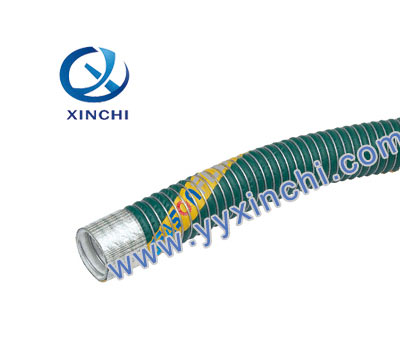Product Details: NSPECTIONS & CLEANING AND HOSE TESTING.
INSPECTIONS
A damaged or out of service hose can be extremely dangerous. Consequently, all hoses should be visually inspected before any use and should undergo safety checks every six months. In the inspection attention should be paid to:
-scratches
-interior or exterior wires out of place
-corrosion or abrasion of the external wire
-looseness or displacement of the coupling endings
-other abnormalities including imperfections in the couplings
-chemical stains, deterioration or damage of the outer hose covering
Any hoses with the above mentioned defects should be put out of service. Moderate abrasions on the outer covering may be acceptable only in the case that the interior layers are in perfect condition.
CLEANING
The hose should be cleaned after use, pior to inspection and before storing for extended periods of time. The cleaning system depends on the type of hose and its use.
A flush cleaning is normally sufficient with fluids such as clean water, hot water, detergents and solvents at room temperature. If sea water is used, the hose should be rinsed well to reduce the risk of corrosion on the steel, couplings or inner wires of galvanized steel.
It is extremely important prior to cleaning to eliminate any residue of acids in the inside of the hose to avoid exothermic reactions during cleaning. It is equally important to eliminate any residue to avoid possible chemical reactions when the hose returns to service. Cleaning may be with air currents with the hose ends open and with the temperature never higher than the working temperature so as not to damage the structure or composition. Compressed air may be used, again with the hose ends open. During cleaning the hose must be grounded to avoid static electric build-up, especially when its in an area near flammable products.
TESTING
At least once a year the hose must pass a hydraulic test in the following way:
-emptying and thorough cleaning of the hose with testing from end to end of electrical continuity.
-Visual inspection: any hose with a visual defect should not be passed
-Hang the hose on round supports which allow examination of movement of the hose under pressure
-Close the ends and fill the hose completely with water. Purge all air from hose.
-Pressurize the connection 1.5 times the working pressure allowed and maintain the pressure during 10 minutes. Examine for leaks.
-Check that the value of electrical continuity is the same as the initial test
Note that the composite hoses under pressure elongate, a characteristic of these hoses, different to those of rubber and should not be considered a fault in the hose nor used to establish the state of reinforcements.
ELECTRICAL CONTINUITY TEST
To prevent the build-up of static electricity during use, all metal parts should remain connected during manufacture.
At a minimum, every six months the hoses should be examined:
-stretch out the hose on the ground
-test the electrical conductivity from end to end with a multimeter or an ohm meter. Any hose which does not have electrical continuity should be placed out of service.
-total resistance value of each composite hose should be : ≤10Ω
To ensure long, trouble-free service from these robust versatile hoses, we advise the following installation procedures.
1. Support hose with slings where appropriate.
2. Always support hose near coupling.
3. Protect hose against sharp edges, such as jetty edges and ships’ guard rail.
4. Store hose flatwise in dry and ventilate place.
5. Composite hoses that with flanges should have one side with free flange.

The following operation are that should be prohibited:
1. Hang the composite hose to coupling without any support in the middle.
2. Hang the composite hose with only one sling.
3. Hang the composite hose between ship and dock directly.
4. Overbending the composite hose.



